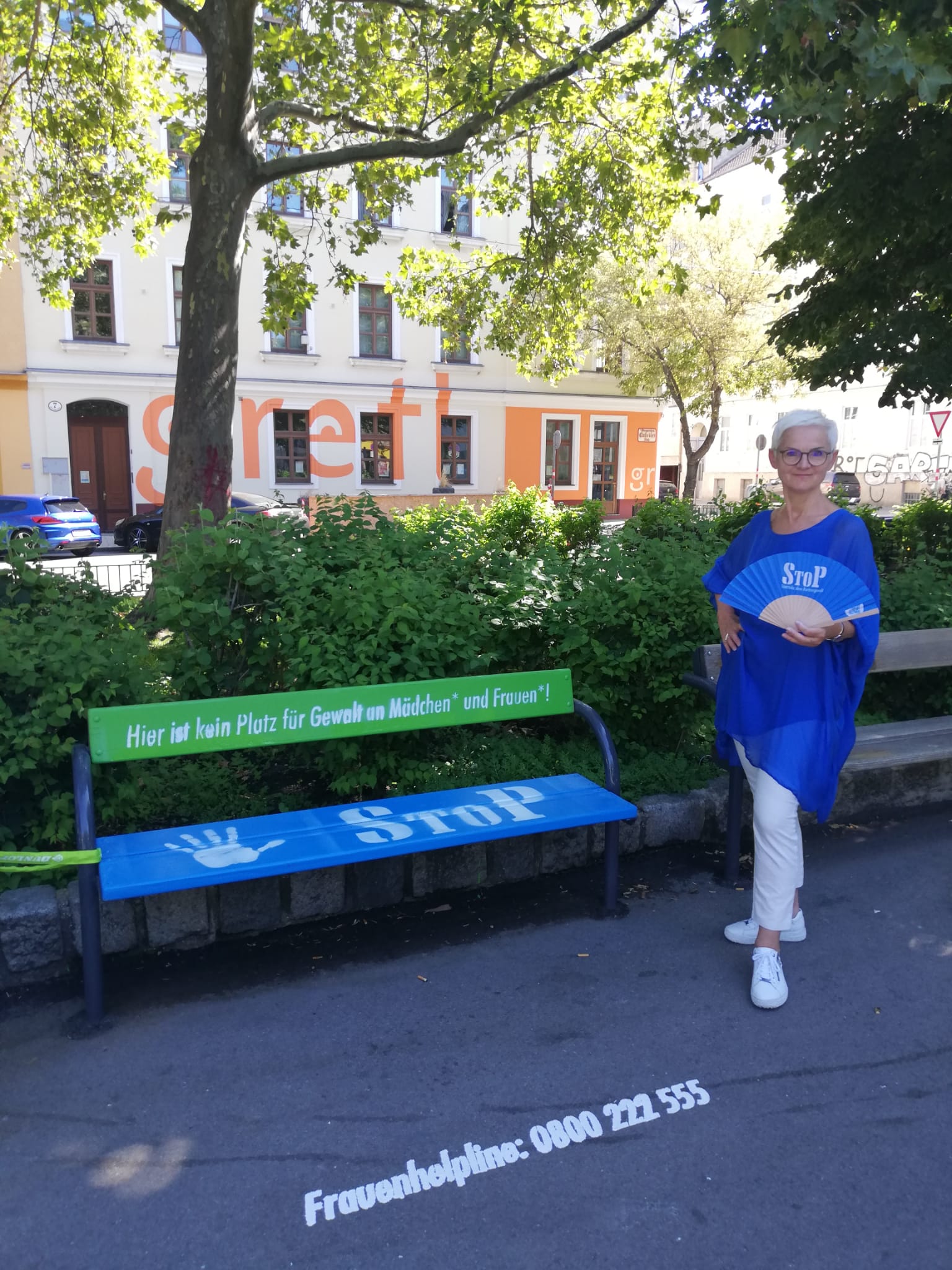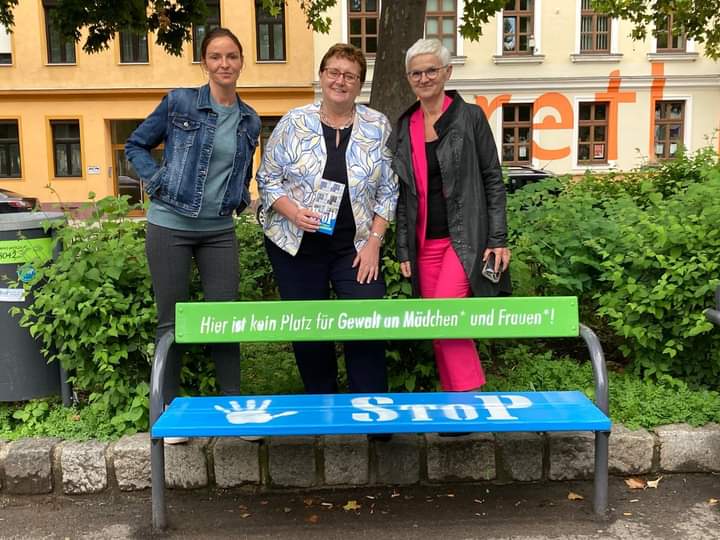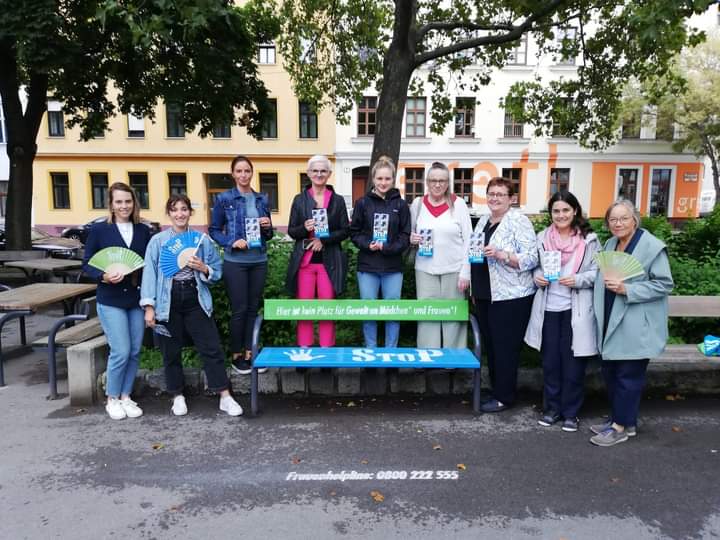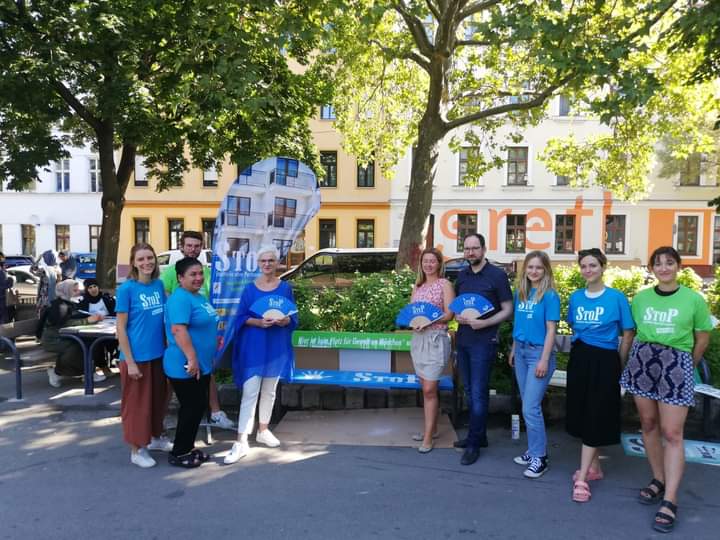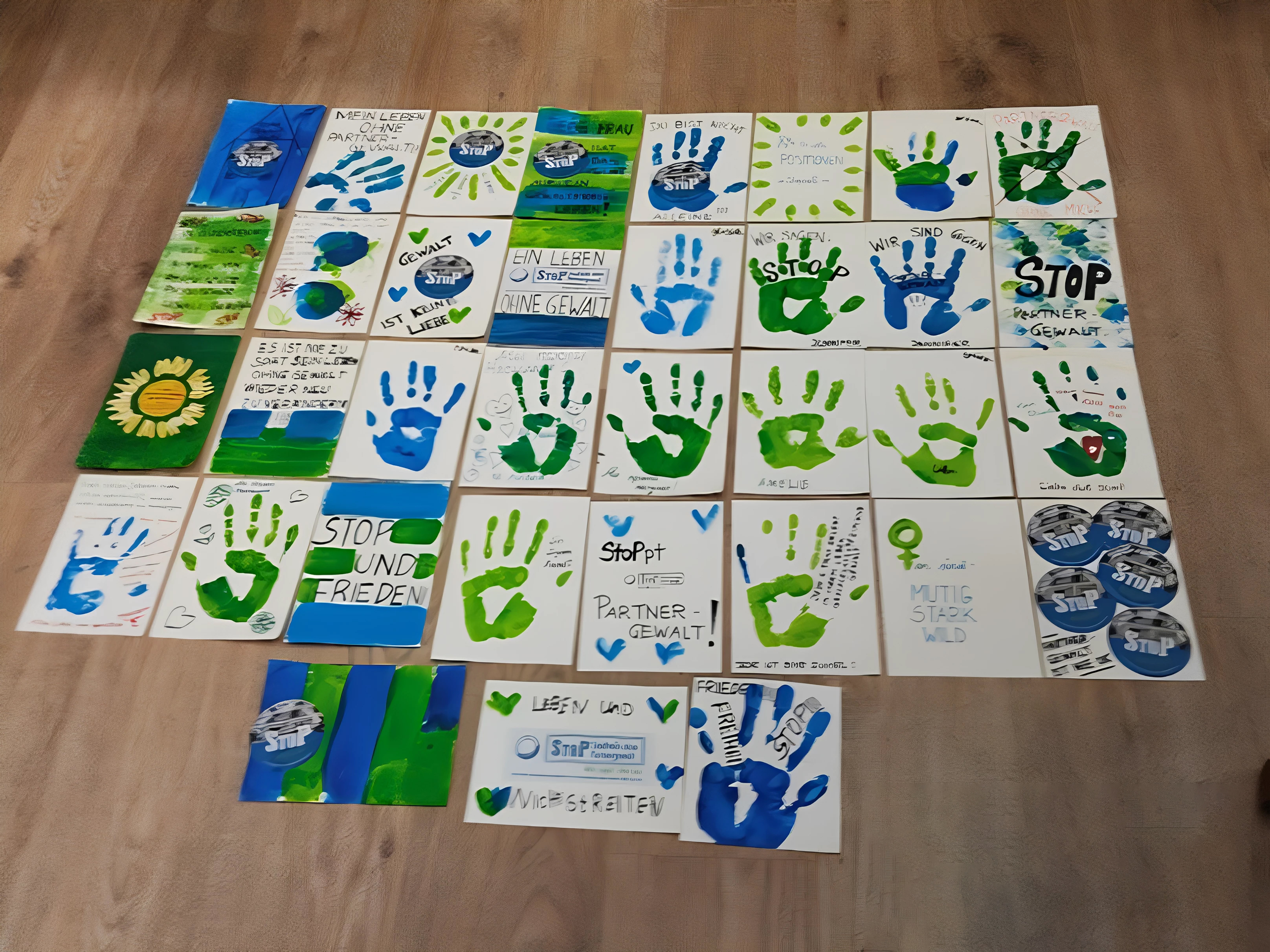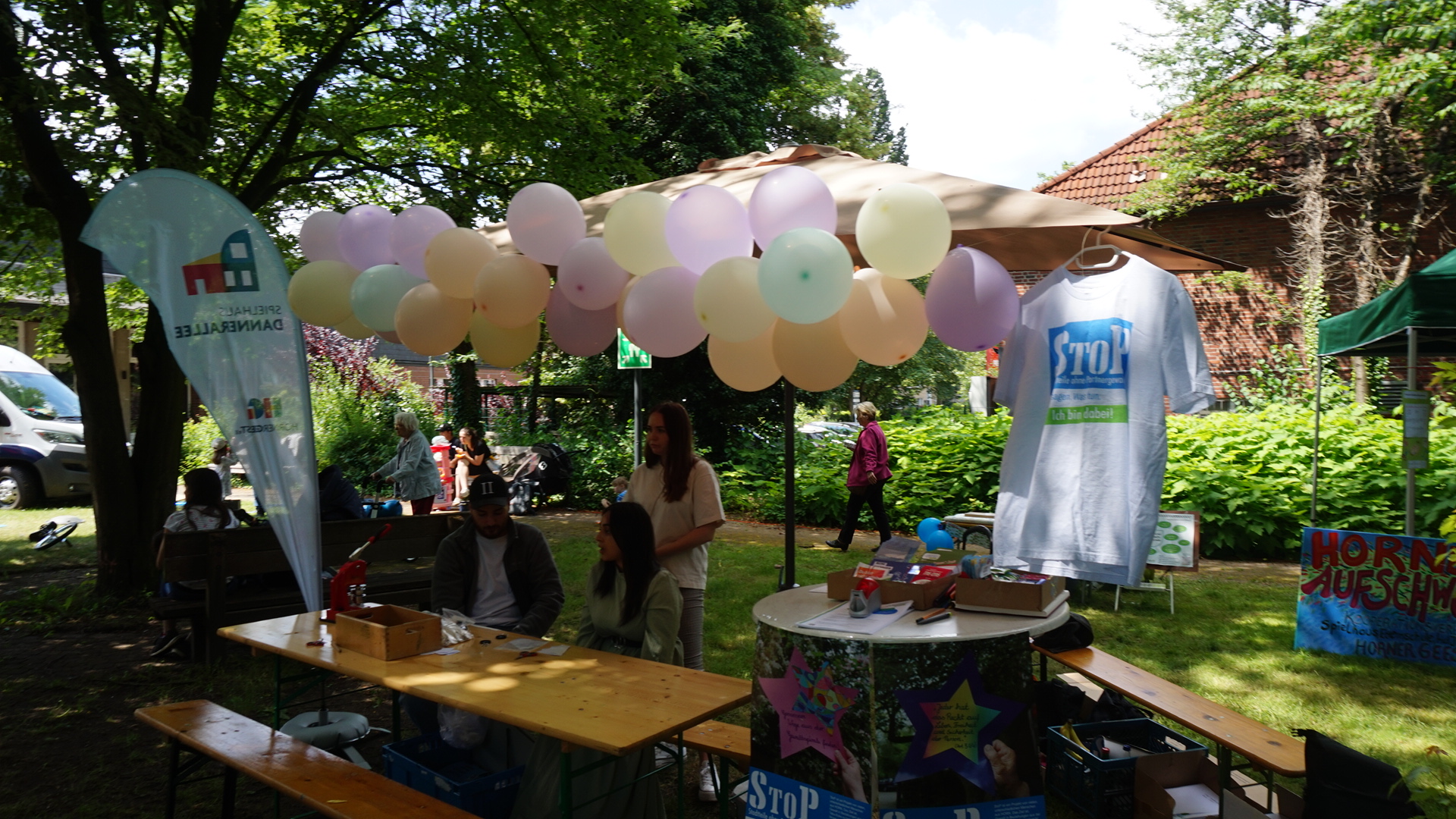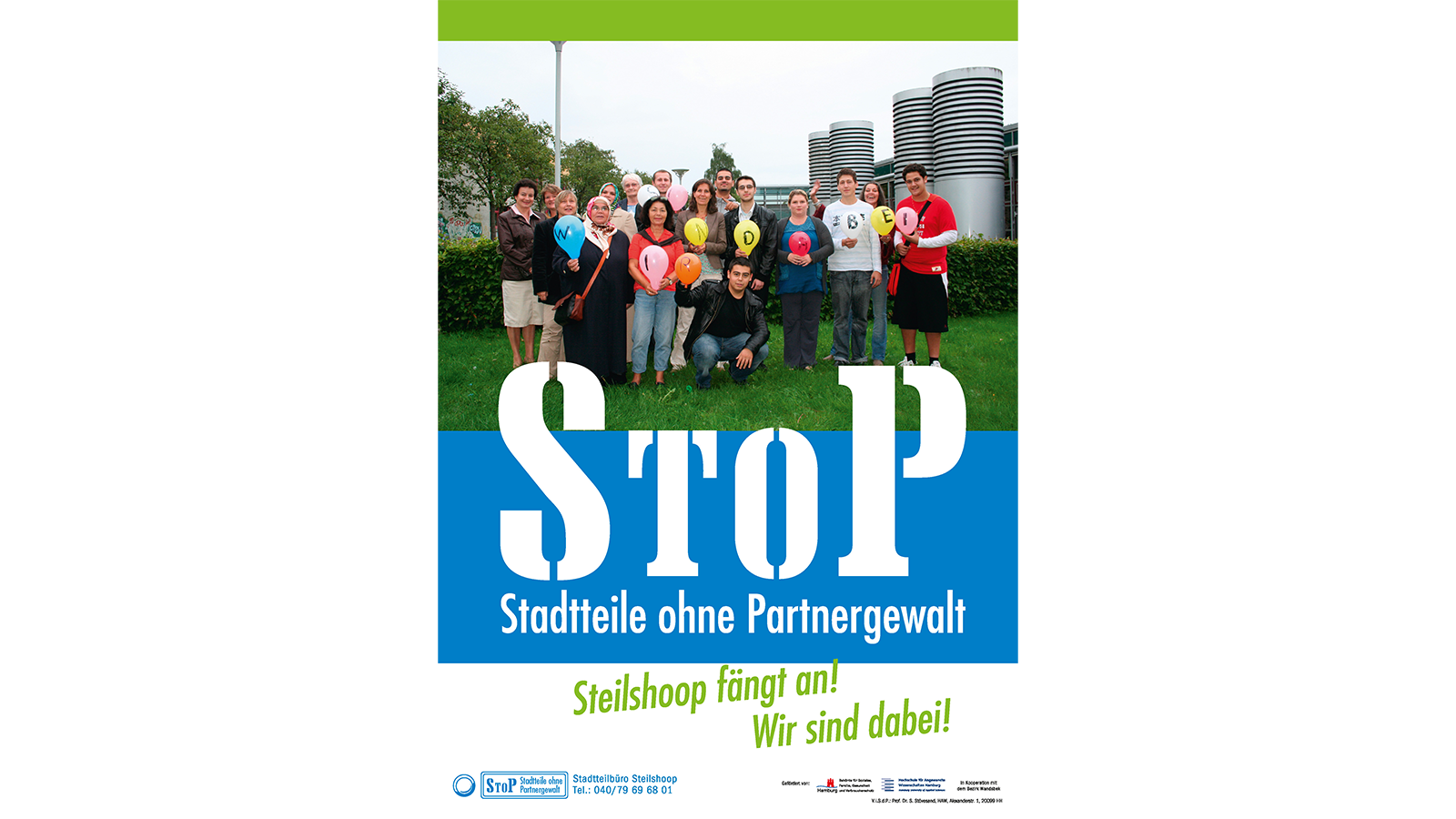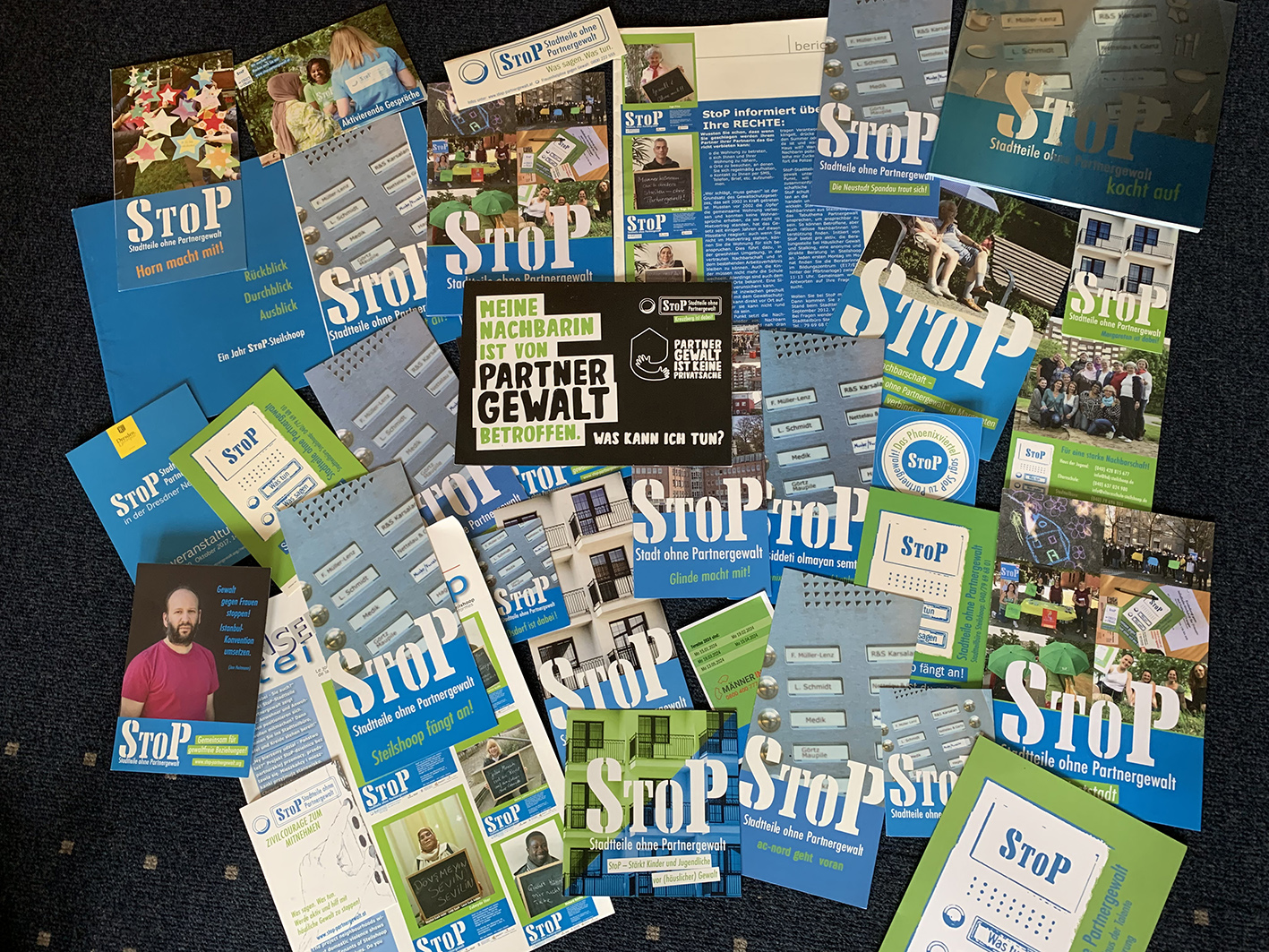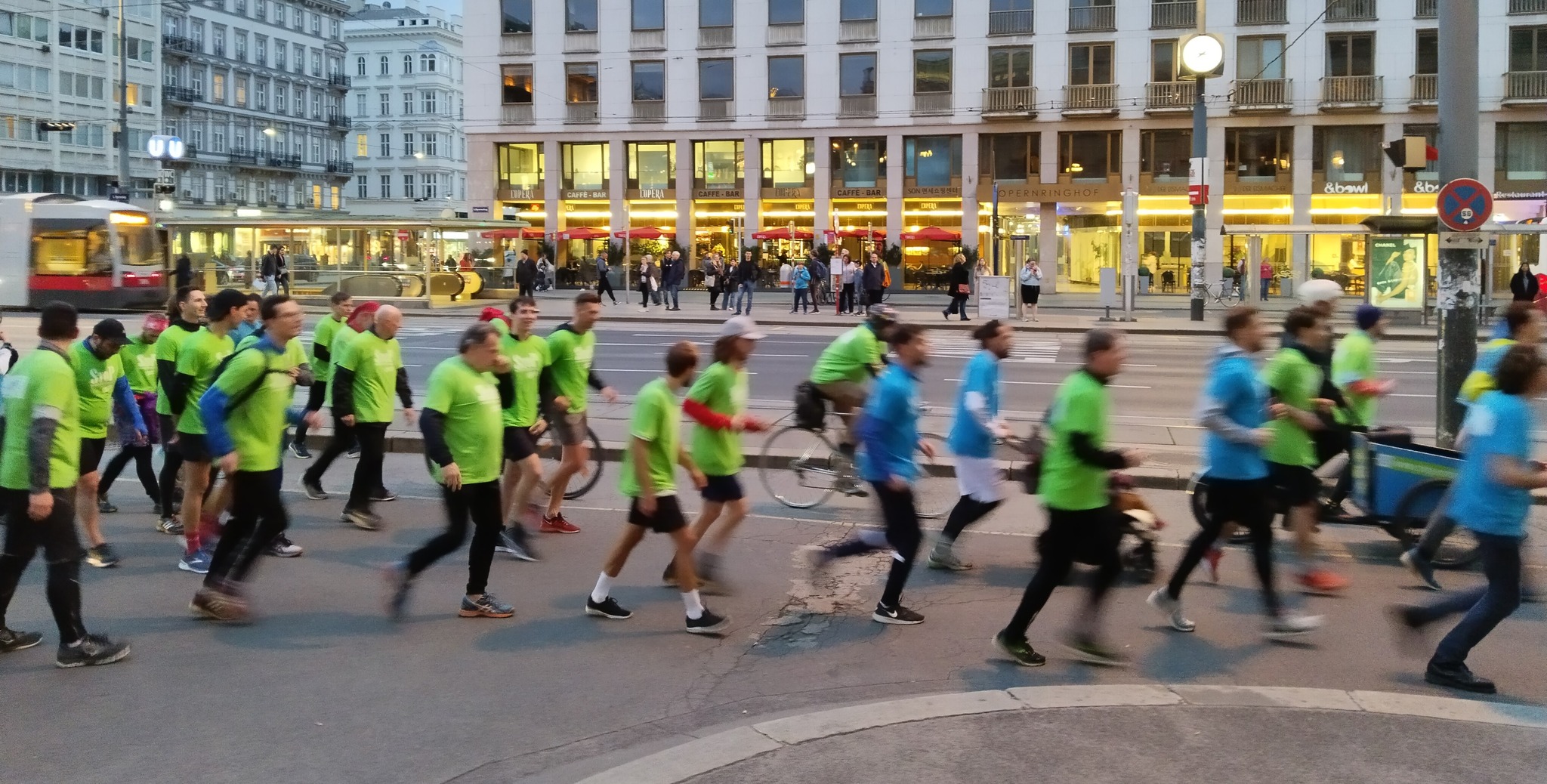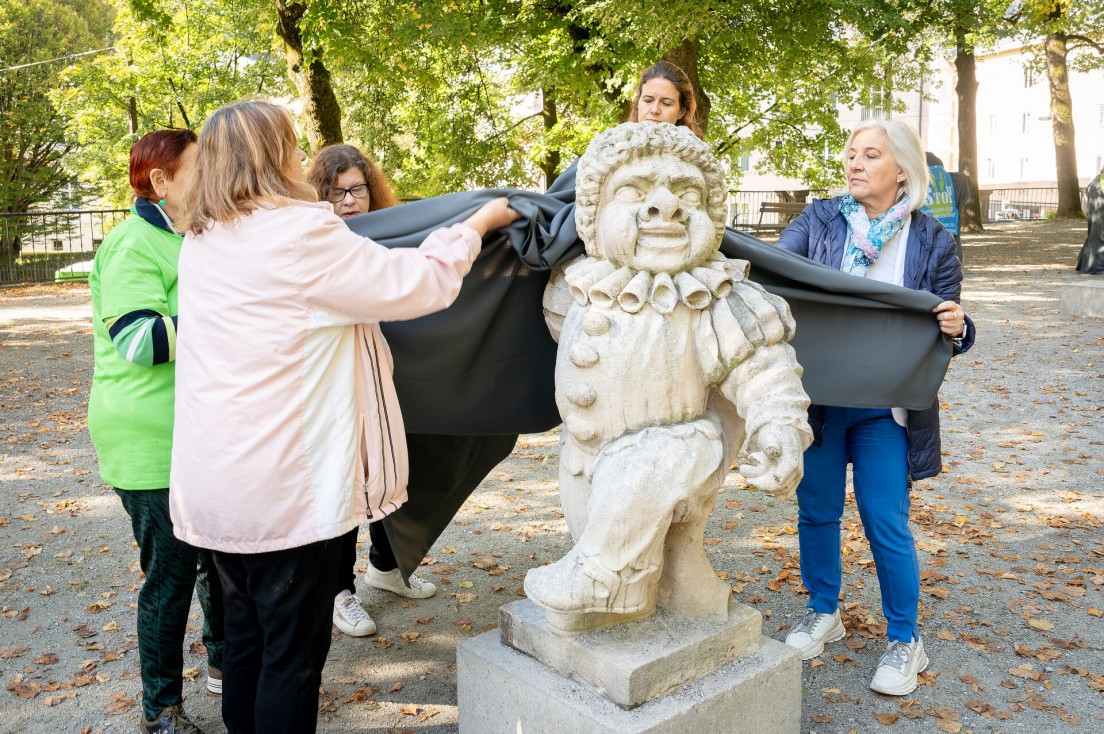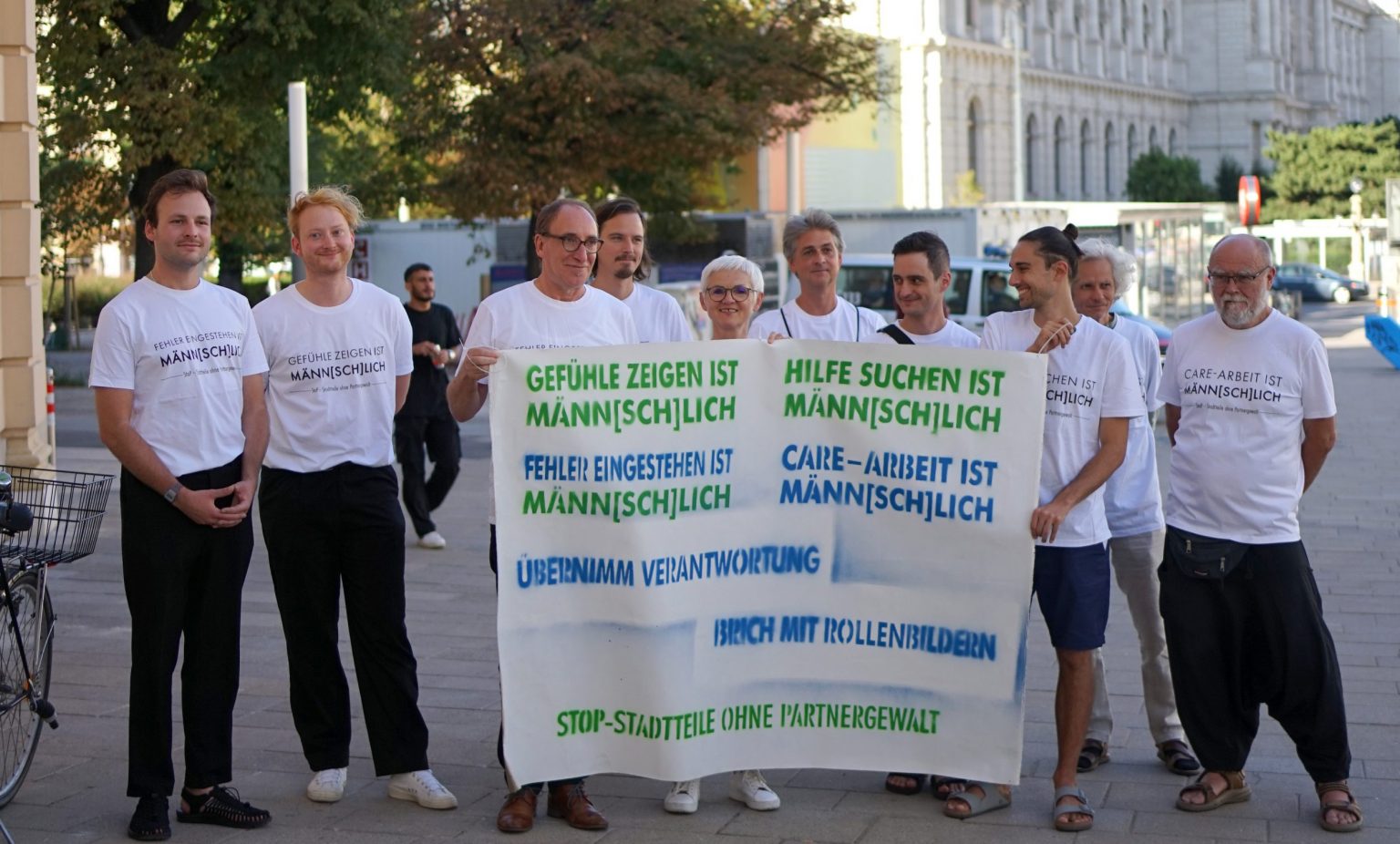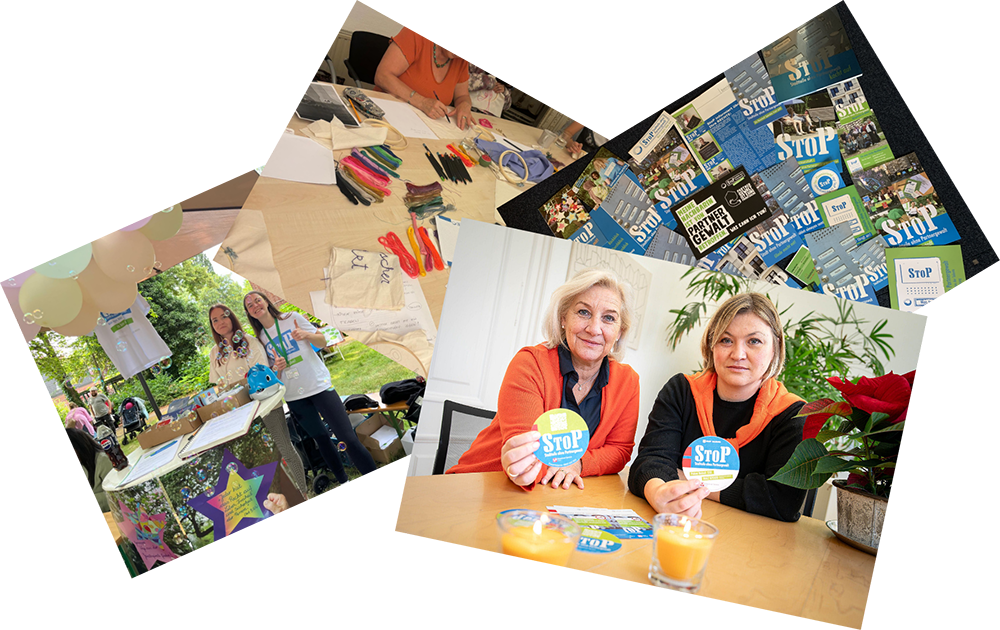Why
The StoP park benches in Austria, with the inscription “Here is no place for violence against women and girls” are an effective tool for engaging local communities and raising awareness about domestic violence. By involving neighbors in the design, painting, and installation, the initiative encourages active participation and civil courage. These benches serve as visible symbols of community responsibility, making the issue of domestic violence more publicly acknowledged.
They are particularly useful at the start of StoP initiatives, providing a low-barrier way to engage diverse groups, including schools and local residents. The benches generate strong publicity and have been successful in attracting attention from politicians and sponsors. Additionally, they can be tied to global campaigns, such as the 16 Days of Activism Against Gender-Based Violence, further amplifying their impact.

What
The aim of the park benches is to inform people that violence against women is a central issue in our society and that it naturally belongs in the public eye. The park benches can be meeting places to bring the neighborhood together and talk about partner violence.
Visualizing the violence
The inscription “Here is no place for violence against women and girls” is intended to raise awareness of the issue in the public, in the immediate vicinity and in the neighborhood. The benches are intended to encourage people to think, rethink, talk and act. According to the motto: “What to say. What to do”. The park benches also visualize the commitment of neighbors or other people or groups, such as school classes, the parish council or the local council, who are involved in painting the park benches. The importance of the topic is emphasized through kick-off events or press conferences.
Banners from StoP and cooperation partners
The StoP logo on the bench can be used to draw attention to StoP work and motivate people to join in.
Further possibilities
Emergency numbers for victims: Like the national women's helpline, which can be placed on the ground right next to the park bench using colored spray chalks and stencils.The stencils or text can also be sprayed on blank walls with official permission (as a separate or additional graffiti campaign).
Objectives
- Making violence against women and girls visible
- Raising awareness of partner violence in the neighborhood
- Visualization of the daily violence against women
- Involving the neighborhood (schools, media, various communities) by preparing and painting the park benches together
- Public demonstration of civil courage against partner violence
Facilitators guide
StoP park benches are a powerful tool for raising awareness about domestic violence and fostering community engagement. They serve as visible symbols in public spaces, encouraging conversations, empowering individuals to seek help, and reducing stigma. These benches promote community participation by involving local residents, schools, and institutions in their design and painting, which strengthens community bonds and shared responsibility. They also serve as a platform for public outreach, displaying emergency contact numbers and violence prevention information. Additionally, the benches create safe spaces for connection, particularly for isolated groups such as older adults or migrant families. They offer a place for reflection and dialogue, helping to build a sense of community support.While vandalism is rare, regular checks and maintenance are essential to ensure the benches remain effective. Engaging local residents in their upkeep fosters a sense of ownership and responsibility.In summary, StoP park benches are an impactful way to engage the community, raise awareness, and support lasting change in the fight against domestic violence.
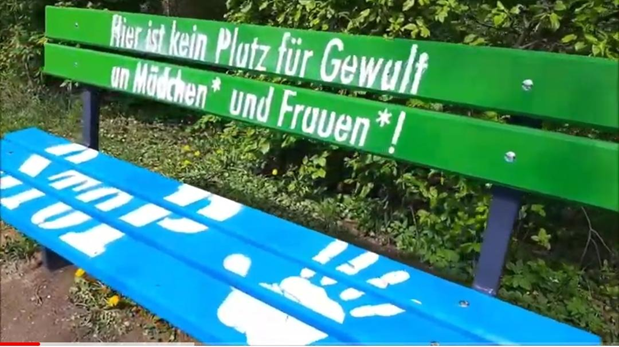
If you have enough space in an organization, the StoP bench can also be placed in an office or in your own garden or on a terrace.
The StoP office in Vienna, for example, has its own bench in the office, which was well suited for a press conference, for example.
Time and people needed
Preparation for painting can take several days or even weeks, especially if official permits are required and if the weather is cold, rainy and damp and foggy. Wet benches cannot be sprayed. In winter or in rainy weather, the benches should not be sprayed and painted outdoors.
Group size: 5-30 Persons
Steps / Action
- Choose a Location:
Work with neighbors and activists to decide on a suitable park or public space for the bench. - Get Approval:
Convince local authorities of the importance of the project. Address concerns about vandalism or maintenance, such as "Who will repair the benches if they are damaged?" - Check Bench Availability:
Decide whether you can use an existing bench or if a new one needs to be purchased. - Budget Planning:
Calculate the costs for buying materials and the bench itself. - Gather Materials:
Obtain all necessary materials. You may also need a craftsperson to sand the bench. - Obtain Permissions:
Clarify what permissions are needed from local authorities or mayors. - Consider Sponsorship:
Think about getting a sponsor for the bench to show community responsibility. - Recruit Partners:
Find local partners (such as community groups or businesses) to support the project. - Involve Schools:
Invite nearby school classes to help with sanding, painting, and creating signs from the start. - Engage the Media:
Inform local media about the project to raise awareness and encourage participation. - Secure Financial Support:
Recruit sponsors for financial or material support. - Plan the Event:
Set the date, time, and location. Make sure the weather is suitable for painting—avoid wet or cold seasons. - Prepare in Advance:
Paint the primer indoors if necessary, then set up the bench outdoors once dry. - Assign Responsibilities:
Identify people responsible for setting up, maintaining, and dismantling the bench. - Involve the Community:
Invite local neighbors, groups, and other interested parties to participate. - Prepare Stencils & Signs:
Work with the neighborhood group to design stencils for the bench and surrounding signs. - Ensure Correct Colors:
Use StoP's color codes: Blue (#007FC7) and Green (#86BC22) for a consistent look. - Launch Event:
For the kick-off, invite media, local politicians, and key partners to the unveiling. Politicians or sponsors can also take part in painting the bench.
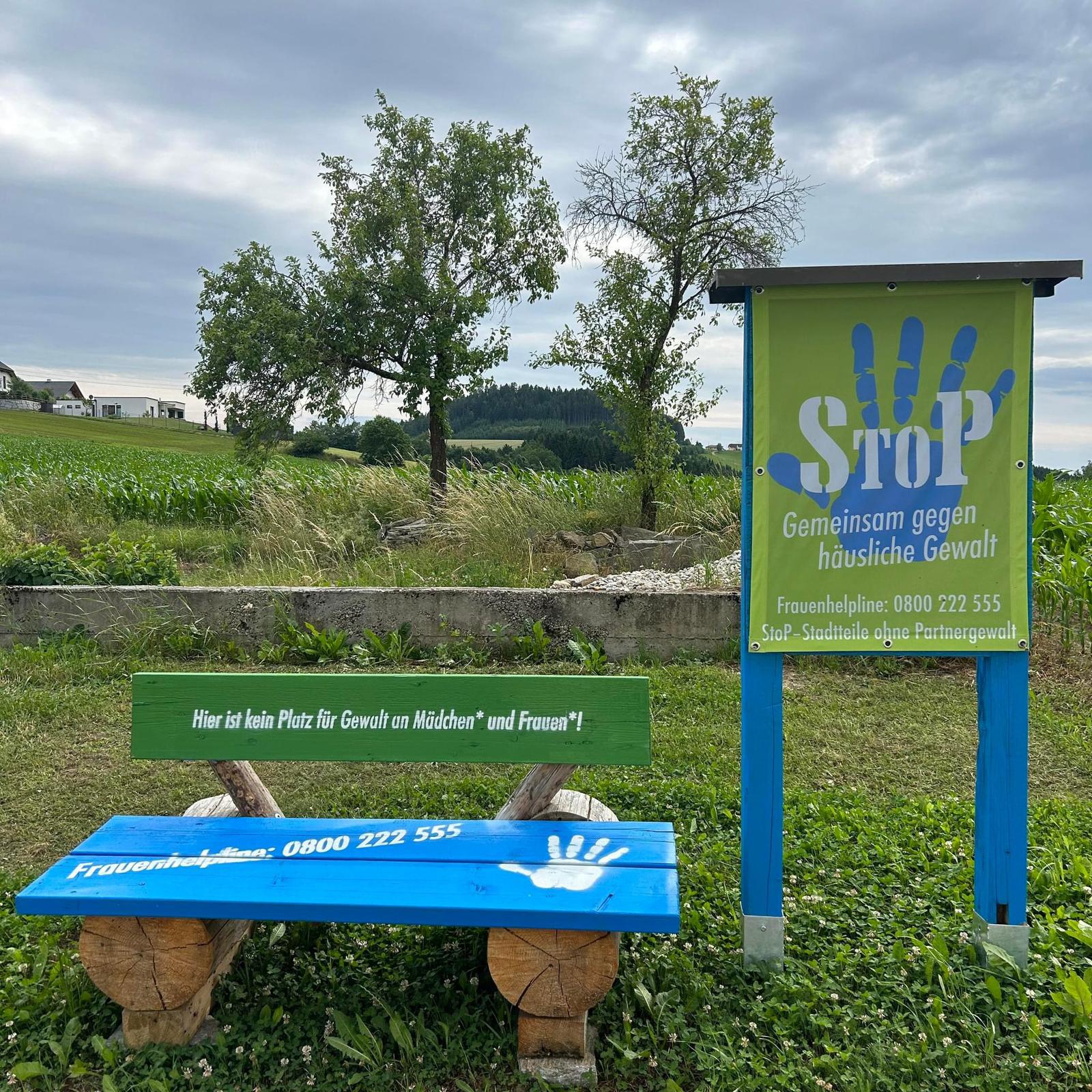
Links
-
The templates in German can be requested from Austrian locations, all other national languages must be produced by the customer. Contacts:
